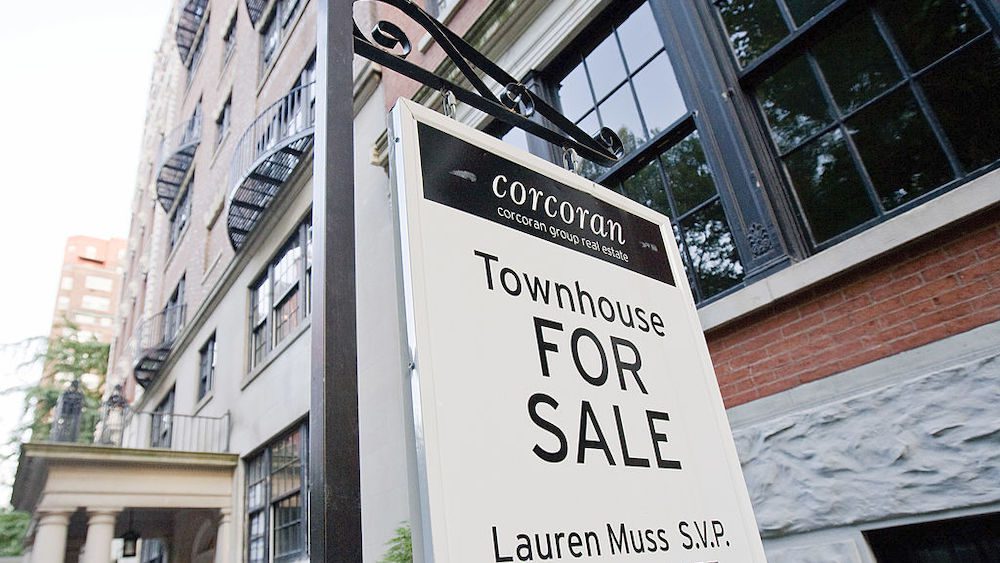
Andrew Harrer/Bloomberg via Getty Images
Home-price growth accelerated in February to its highest level in more than a year, but the housing market’s momentum headed into the spring-selling season has been reversed in recent weeks by the coronavirus pandemic.
The S&P CoreLogic Case-Shiller National Home Price Index, which measures average home prices in major metropolitan areas across the nation, rose 4.2% in the year that ended in February, up from a 3.9% annual rate the prior month. February marked the highest annual growth rate since January 2019.
The data, which was released Tuesday, is the latest indication that the housing market was set for a robust spring-selling season before the pandemic due to a strong job market at the time and low mortgage rates.
Also on Tuesday, the Commerce Department reported that the homeownership rate ticked up to 65.3% in the first quarter, up from 64.2% a year earlier and the highest level since mid-2013. For households headed by someone under 35 years old, a key source of homebuying demand, the homeownership rate rose to 37.3% from 35.4% a year earlier.
U.S. existing-home sales rose to a 13-year high in February, according to the National Association of Realtors. But sales dropped 8.5% in March, as buyers and sellers pulled out of pending deals or opted to stay out of the market. Economists expect home sales to fall more this month.
As home sales fall, price growth is likely to slow in the coming months, said Danielle Hale, chief economist at Realtor.com. In recent weeks, “sellers are getting much less aggressive, which has led to declines in new listings and kept asking prices flat,” she said. News Corp, parent of The Wall Street Journal, operates Realtor.com.
The Case-Shiller 10-city index gained 2.9% over the year ended in February, up from a 2.6% annual change in January. The 20-city index gained 3.5%, after an annual gain of 3.1% in February. Price growth accelerated in 17 of the 20 cities.
Economists surveyed by The Wall Street Journal expected the 20-city index to gain 3.2%.
Phoenix had the fastest home-price growth in the country, at 7.5%, followed by Seattle at 6%.
A separate measure of home-price growth by the Federal Housing Finance Agency released last week found a 5.7% increase in home prices in February from a year earlier.
The homeownership rate data showed that the number of owner households rose in the first quarter of 2020 from a year earlier, while the number of renter households fell.
In the coming quarters, the homeownership rate could continue to rise if declining economic activity prompts more people to move in with roommates or family members, decreasing the number of renter households, said Mark Fleming, chief economist at First American Financial Corp.
“One of the things we know is in a recession, people in college, people in their early 20s just out of college, really begin to hunker down,” he said. “You don’t run out and form a household when the economic environment is not healthy.”
But the growth in the number of owner households is also likely to slow, said Ralph McLaughlin, chief economist at housing-finance startup Haus. “Some renters who would have bought a house this spring may be having to use their down payment for emergency funds during the pandemic, and as a result, will delay their plans to buy a home,” he said.
The post U.S. Home-Price Growth Accelerated. Then Housing Market’s Momentum Was Hit by Coronavirus appeared first on Real Estate News & Insights | realtor.com®.
